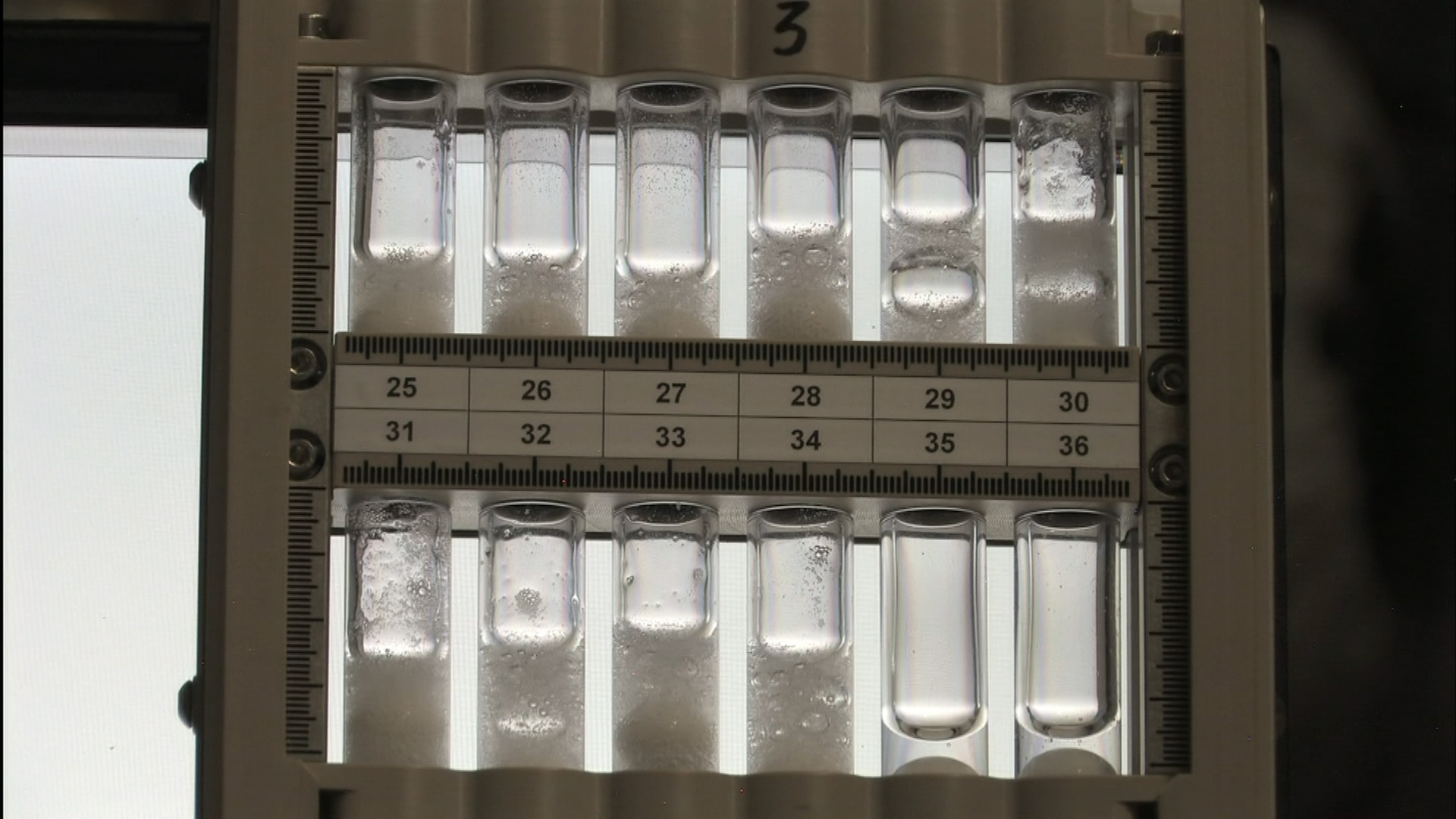FOAM-S experiment was performed onboard the ISS (inside Columbus module) by Frank De Winne in three different sessions at the end of 2009. This experiment basically consisted on recording aqueous and non-aqueous foams in microgravity environment. There were a total of 5 cell arrays, each of them comprised of 12 cylinders filled with different fluid mixtures samples. After shaking the cell array, the astronaut had to place it on a stand with a white background and leave the HD video camera recording the experiment for a certain period of time. E-USOC supported this activity through real time audio and video from the ISS.
Once the video tapes were downloaded to ground on Flight ULF-3, E-USOC team converted the 11 hours of High Definition video stream into images. This extraction produced almost 6 TeraBytes of TIFF files (over a million of images). Afterwards it started a process of selecting and sorting images by experiment run, compressing and giving format to all those image with a timestamp reference, basing on the scientific requirements. In the picture at the left you can see an example of a scientific image.
Aditionally, E-USOC produced a compressed video for each experiment run from all the available images and moreover store data (classified images and videos) into an external hard drive per User Home Base (UHB) involved in this project.
From now on, scientists from GRASP (Institut de Physique of Université de Liège – Belgique), Institut de Physique de Rennes (Université de Rennes – France), Laboratoire de Physique des Solides (Université Paris Sud – France), Department of Physics, Trinity College (Dublin – Ireland), Dep. of Physics-Astronomy University of Pennsylvania (Philadelphia – USA) and also ESA Science, will keep on going with the research objectives for this project.
For further information please refer to our full article about FOAM-S.


